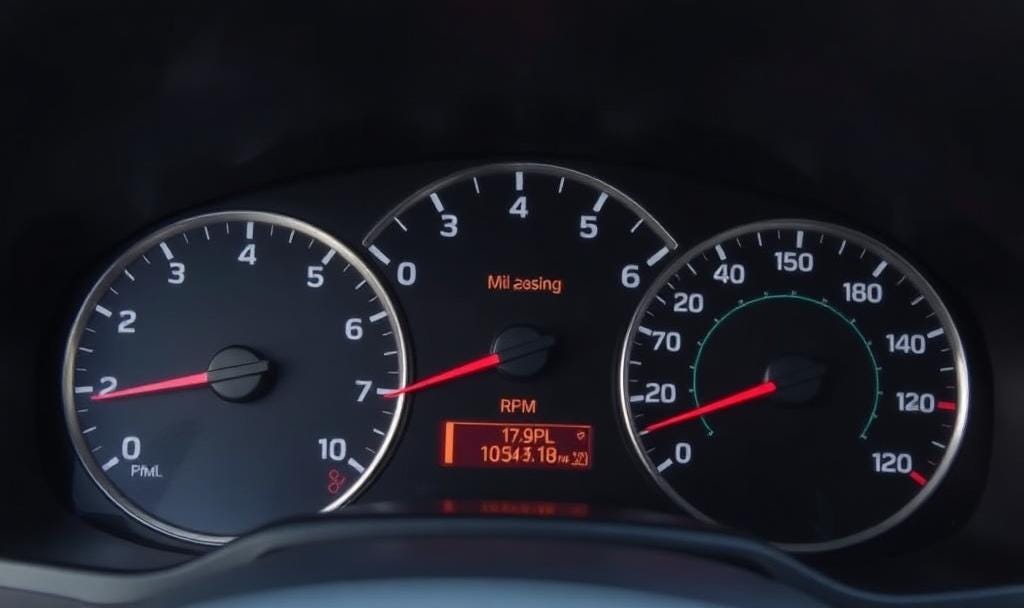How to Price Your Used Car Competitively: A Step-by-Step Guide
Expert Tips to Maximize Value and Sell Your Car Faster
Pricing your used car competitively is one of the most critical steps in ensuring a quick and profitable sale. Set the price too high, and you risk scaring away potential buyers; set it too low, and you could lose out on significant value. In this comprehensive guide, we’ll walk you through the process of pricing your used car competitively in Canada.
From researching market trends to adjusting for your car’s condition, these expert tips will help you find the sweet spot that attracts buyers while maximizing your return. Whether you’re a private seller or a dealership, this guide will equip you with the tools to price your car effectively and sell it faster.
1. Research the Market Value
The first step in pricing your used car is understanding its market value. Here’s how to research effectively:
Use Online Valuation Tools:
Kelley Blue Book (KBB): A trusted resource for determining the fair market value of your car based on its make, model, year, mileage, and condition.
Edmunds: Provides detailed pricing information, including trade-in and private sale values.
Canadian Black Book: A Canadian-specific tool that offers accurate pricing for used cars in Canada.
Check Comparable Listings:
Online Platforms: Browse listings on platforms like AutoTrader, Kijiji, and Facebook Marketplace to see what similar cars are selling for in your area.
Local Dealerships: Visit local dealerships or their websites to compare prices for similar vehicles.
Pro Tip: Look for cars with similar mileage, condition, and features to get the most accurate comparison.
2. Consider Your Car’s Condition
The condition of your car plays a significant role in determining its value. Here’s how to assess and adjust for your car’s condition:
Exterior Condition:
Paint and Body: Check for scratches, dents, rust, or signs of repainting. Minor cosmetic issues may not significantly impact value, but major damage will.
Tires and Wheels: Inspect the tires for tread depth and overall condition. Worn-out tires may require replacement, which can affect pricing.
Interior Condition:
Seats and Upholstery: Look for tears, stains, or excessive wear. A clean, well-maintained interior can increase your car’s value.
Electronics: Ensure all features, such as the infotainment system, air conditioning, and power windows, are functioning properly.
Mechanical Condition:
Engine and Transmission: A well-maintained engine and smooth transmission can add value, while issues may require price adjustments.
Service Records: Provide proof of regular maintenance and repairs to reassure buyers and justify your asking price.
Pro Tip: Be honest about your car’s condition. Transparency builds trust and can lead to a faster sale.
3. Factor in Mileage
Mileage is one of the most significant factors buyers consider when purchasing a used car. Here’s how to account for it:
Average Mileage:
Annual Mileage: The average Canadian driver puts about 20,000 kilometers on their car each year. Use this as a benchmark to assess your car’s mileage.
High vs. Low Mileage: Cars with lower-than-average mileage may command a higher price, while high-mileage vehicles may need to be priced lower.
Adjust for Wear and Tear:
High Mileage: If your car has high mileage but is in excellent condition, highlight its maintenance history to justify a higher price.
Low Mileage: If your car has low mileage, emphasize this as a selling point to attract buyers.
Pro Tip: Use mileage as a starting point but consider other factors, such as condition and maintenance, when setting your price.
4. Account for Market Demand
Market demand can significantly impact your car’s value. Here’s how to gauge demand and adjust your pricing:
Seasonal Trends:
Winter: SUVs, trucks, and vehicles with all-wheel drive tend to sell for higher prices in the winter.
Summer: Convertibles and sports cars may fetch higher prices in the summer.
Regional Demand:
Urban Areas: Fuel-efficient cars and compact vehicles may be in higher demand in urban areas.
Rural Areas: Trucks and SUVs may be more popular in rural regions.
Economic Factors:
Fuel Prices: Rising fuel prices may increase demand for fuel-efficient vehicles.
Economic Conditions: During economic downturns, buyers may prioritize affordable, reliable cars over luxury models.
Pro Tip: Monitor local market trends and adjust your pricing strategy accordingly to stay competitive.
5. Set a Competitive Price
Once you’ve gathered all the necessary information, it’s time to set a competitive price. Here’s how to do it:
Start with Market Value:
Base Price: Use the market value from online tools and comparable listings as your starting point.
Adjust for Condition: Factor in your car’s condition, mileage, and any additional features or upgrades.
Be Realistic:
Avoid Overpricing: Overpricing your car can deter potential buyers and prolong the selling process.
Leave Room for Negotiation: Set your price slightly higher than your target to leave room for negotiation.
Pro Tip: Use a pricing range (e.g., 12,000−12,000−13,000) to give buyers flexibility while maintaining your desired price point.
6. Highlight Your Car’s Unique Selling Points
To justify your asking price, emphasize your car’s unique features and benefits. Here’s how:
Special Features:
Technology: Highlight advanced features like navigation systems, premium sound systems, or driver-assistance technologies.
Upgrades: Mention any aftermarket upgrades, such as new tires, custom wheels, or performance enhancements.
Maintenance History:
Service Records: Provide detailed service records to show your car has been well-maintained.
Warranty: If your car is still under warranty, mention this as a selling point.
Fuel Efficiency:
MPG Ratings: Highlight your car’s fuel efficiency, especially if it’s a hybrid or electric vehicle.
Cost Savings: Emphasize the long-term cost savings of owning a fuel-efficient car.
Pro Tip: Use high-quality photos and videos to showcase your car’s features and condition in your listing.
7. Be Prepared to Negotiate
Negotiation is a natural part of the car-selling process. Here’s how to handle it effectively:
Know Your Bottom Line:
Minimum Price: Determine the lowest price you’re willing to accept and stick to it.
Flexibility: Be open to reasonable offers but avoid underselling your car.
Highlight Value:
Justify Your Price: Use your research and car’s unique selling points to justify your asking price.
Be Transparent: Be honest about your car’s condition and history to build trust with buyers.
Pro Tip: Stay calm and professional during negotiations to maintain a positive relationship with potential buyers.
8. Monitor and Adjust Your Price
If your car isn’t selling as quickly as you’d like, it may be time to adjust your price. Here’s how to do it:
Analyze Feedback:
Buyer Inquiries: Pay attention to the feedback you receive from potential buyers. Are they hesitant because of the price?
Market Trends: Monitor market trends to see if demand or pricing has changed.
Make Adjustments:
Lower the Price: If your car isn’t attracting interest, consider lowering the price incrementally.
Promote Your Listing: Use social media, online platforms, and word of mouth to increase visibility.
Pro Tip: Don’t be afraid to make adjustments. A small price reduction can often lead to a quicker sale.
9. Avoid Common Pricing Mistakes
Avoid these common mistakes to ensure you price your car competitively:
Overpricing:
Unrealistic Expectations: Setting an unrealistic price can deter buyers and prolong the selling process.
Ignoring Market Trends: Failing to consider market demand and trends can result in an overpriced listing.
Underpricing:
Leaving Money on the Table: Pricing your car too low can result in a quick sale but may cost you potential profit.
Lack of Research: Failing to research your car’s market value can lead to underpricing.
Pro Tip: Use multiple sources to determine your car’s value and avoid relying on a single tool or listing.
10. Final Tips for a Successful Sale
Here are some additional tips to help you price your car competitively and sell it faster:
Be Honest:
Transparency: Be honest about your car’s condition and history to build trust with buyers.
Accurate Listings: Provide accurate descriptions and photos to avoid disappointing potential buyers.
Be Flexible:
Negotiation: Be open to negotiation and willing to compromise to close the deal.
Scheduling: Be flexible with scheduling test drives and inspections to accommodate buyers.
Promote Your Listing:
Multiple Platforms: List your car on multiple platforms to increase visibility.
Social Media: Share your listing on social media to reach a wider audience.
Pro Tip: Highlight any unique selling points, such as low mileage or recent upgrades, to make your car stand out.
Conclusion
Pricing your used car competitively is essential to attracting buyers and maximizing your return. By researching market value, considering your car’s condition, and staying informed about market trends, you can set a price that reflects your car’s true worth while appealing to potential buyers. Whether you’re selling privately or through a dealership, these tips will help you navigate the pricing process with confidence and achieve a successful sale.
For a wide selection of used cars, trucks, and motorcycles, visit AutoMarketplaceCanada.com to explore your options and find the perfect vehicle for your needs.











